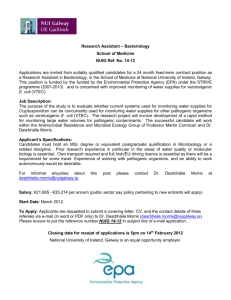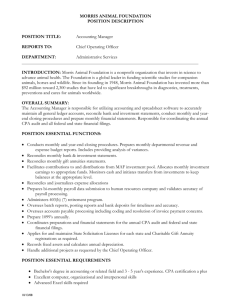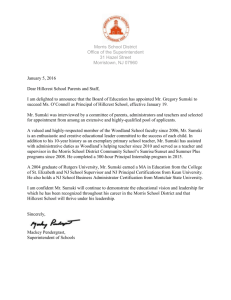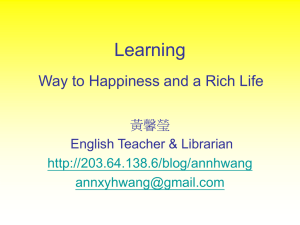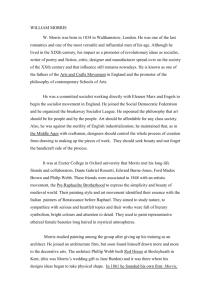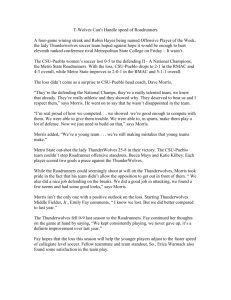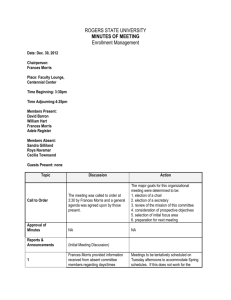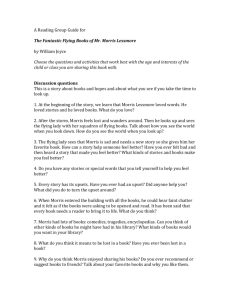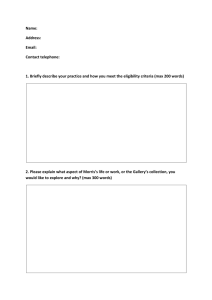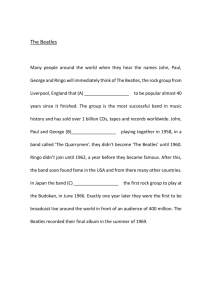Preventing Elder Abuse by Family Caregivers
advertisement
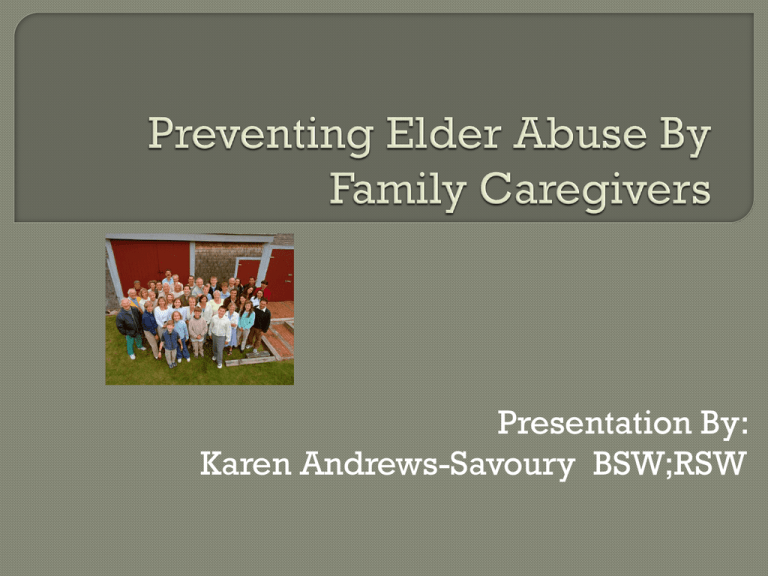
Presentation By: Karen Andrews-Savoury BSW;RSW Having the choice to participate in the decisions that affect one’s life and the life of one’s society and community. To be an effective and creative participant in one’s environment. To understand power not as power-over but as powerto(transformative power) Helping activities in naturally occurring settings in the community The entire community is viewed as an oasis of potential resources • People offering help are required to focus on maintaining their own balance (centeredness) so they are in relationship with the people receiving help. “before you can reach out to help the people around you, you must first understand how to help yourself” The Water Story Please have a glass / bottle of water available during this exercise) Mary and Jim had a big empty house after their three children left home. They were in their mid- fifties and thought about moving to a smaller place. However when Jim’s mom died, they decided to invite Jim’s Dad, Morris to live with them. Morris is 80, very alert and active but he was lonely living alone, was not eating well, and had problems administering his own insulin. A month ago, Jackie their youngest daughter, announced that she was divorcing her husband of seven years and asked if she could move home with her 2 year old son. Suddenly everything seemed to change. Morris started asking Mary for rides and cook and was critical of her. Jackie, her daughter seemed to think that her mom and dad would just drop everything to babysit for their grandson. She seldom offered to cook and did not pick up after herself or her son Sean. Morris became very upset that Sean kept taking his slippers. His diabetes suddenly became very problematic. Mary dropped out of her daytime activities so that she could help Morris and look after Sean. Morris seemed to be deteriorating and whenever she was stern with Sean, he would cry and run to Jackie. Then she would storm around complaining about her troubled life. Jim started staying later and later at work In 2007, there were 4 million family caregivers across Canada Over 2.7 million family caregivers were over age 45 26% of Canadians report having cared for a family member or close friend with a serious health problem in the last 12 months – that’s about 1 out of every 4 people! We are all going to be a caregiver at some point in our lives Role Expectations Cultural Differences Societal Expectations Family Dynamics Economic Hardship Cycle of Violence Health Issues Stress is the body’s response to anything that makes us feel threatened or pressured Positive stress: gears us up to accomplish a task, protects and motivates us Negative stress: leads us to feel tense and upright, can cause many physical, emotional and social symptoms Denial about the disease and its effects on the person affected Anger at the person with the disease and others Withdrawing socially – no longer wanting to stay in touch with friends or participate in activities “Nothing is going to change. I can do this... I don’t need any help.” “ The tension builds up and I get angry. I have stormed out the door...I went right out and stayed out till I cooled down.” “I have lost my identity...my name is now ‘how’s your mother’ “Some friends are interested, others are not interested in your changed situation.” Anxiety about facing another day and what the future holds “I am faced with growing old alone.” Depression - feeling sad and hopeless much of the time “we don’t have the closeness that we use to...I have to ask for hugs now.” “letting go of my dreams... A house, trips...life as I expected it to be with spouse.” Exhaustion – barely having the energy to complete daily tasks “I need to maintain my sanity- need to be healthy to care for [CR], but no time for me, so how do you look after yourself? Sleeplessness – waking up in the middle of the night or having nightmares or stressful dreams “At the end of the day I am very stressed...it takes hours to settle down to sleep” “[CR] is up at night... Is afraid of making a mess...makes me worn out...blow up easily...raises my blood pressure.” Emotional Reactions – crying at minor upsets, often irritable “I feel angry-blow up and then I feel guilty – it has destroyed my self-esteem” “The unpredictability of [CR’s] reactions is still what throws me... I expect a pattern” “I am always walking on glass to keep the peace” Lack of Concentration – having trouble focusing on and completing complex tasks “ I’m always second guessing myself and feel less and less confident that I am doing the right thing.” Health Problems – losing or gaining weight, getting sick more often, developing chronic health problems (high blood pressure) “I am one step away from needing care myself.” “ Physically it is hard, especially on my back... Have to pull him up from the floor after he has fallen. Refuses to let me call the ambulance or other help...an invasion of our privacy...have to avoid extra costs.” Stage One: Frustration Stage Two: Isolation & Lack of Insight Stage Three: Depression CAREGIVER BURNOUT Identifying Feelings Sharing The Care Power As A Resource Strategies That Promote Effective Engagement Community Development, Collective Empowerment and Partnerships If the health care system were a plant, family caregivers would be the roots: invisible, fragile, and vial. Silver Donald Cameron
